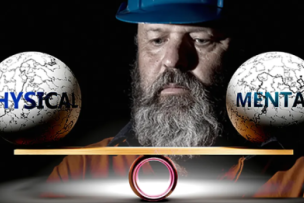Did you know your body comes with a nifty, built-in heat stress hack? Yup. When the world goes volcanic, you've got a trick up your (cooling) sleeve, thanks to a few strategic spots known as pulse points.
UNDERSTANDING HEAT STRESS AND ITS DANGERS
Heat stress occurs when the body's internal cooling mechanisms, like sweating and blood circulation, are overwhelmed, unable to sufficiently cool the body. This can lead to heat exhaustion, heatstroke, and other severe health complications. Workers in fields such as construction, manufacturing, and agriculture are especially vulnerable to these risks due to prolonged exposure to high temperatures.
The Bureau of Labor Statistics (BLS) reports 1,000s of injuries and about 40 deaths on the job every year, but “occupational heat-related illnesses, injuries, and fatalities may be underestimated” according to the Occupational Safety and Health Administration (OSHA).
Here’s an example. An analysis of more than 11 million workers’ compensation injury reports in California from 2001 through 2018 found that working on days with hotter temperatures likely caused about 20,000 injuries and illnesses per year in that state ALONE.
That’s 300 times the annual injuries and illnesses California OSHA (Cal/OSHA) attributes to heat.
Three. Hundred. Times.
No typo.
Three-zero-zero.
So what gives?
Well, here’s a biggie: folks much smarter than us have proven time and time again that heat melts away the brain’s ability to do brain things at peak capacity. Reduced cognitive and physical functioning from the heat leads to recordables under another name . . . like, say, a “slip, trip or fall”. Meanwhile, the true instigator keeps a clean record. That heat stress is a real stinker.
For more on the who/what/where/why/when of heat stress, head over to Ergodyne's heat stress hazard page.
WHAT ARE PULSE POINTS AND HOW DO THEY HELP YOU COOL DOWN?
Effective heat management goes beyond comfort, directly impacting workers' safety and productivity. Keeping core body temperatures within safe limits prevents heat stress and enhances cognitive and physical performance, essential for safety and efficiency in high-temperature work settings.
The body has two primary mechanisms to cool itself when it heats up: vasodilation and perspiration (read more about that here).
Vasodilation involves the widening of blood vessels, which increases blood flow through them. In response to heat, the blood vessels near the skin's surface expand, allowing more blood to reach the body’s exterior where it can release heat, provided the external temperature is below the body’s core temperature.
This cooler blood then moves back to the center of the body, where it helps to lower the core temperature by absorbing heat. This process operates similarly to the cooling systems used in refrigerators and car engines, where a liquid coolant circulates through the system, absorbs heat, and is then cycled back out to cool in the ambient air.
Pulse points, where blood vessels are close to the surface, can cool your blood and, by extension, your entire body, quicker than you can say "ice ice baby". Located at your head, neck, underarms, wrists and groin, these spots are your go-to zones for quick cool-downs. Pair those pulse points with cooling PPE (Personal Protective Equipment) and you've got yourself an invigorating cooling effect rivaled only by the feeling of biting into a York Peppermint Patty.
PAIRING PULSE POINTS WITH YOUR COOLING PPE
Anybody with a pulse can stay cool. Deploying cooling PPE on these strategic points helps take the edge off the broiling heat.





Talk to Us!
Leave a reply
Your email address will not be published. Required fields are marked *